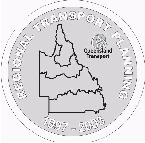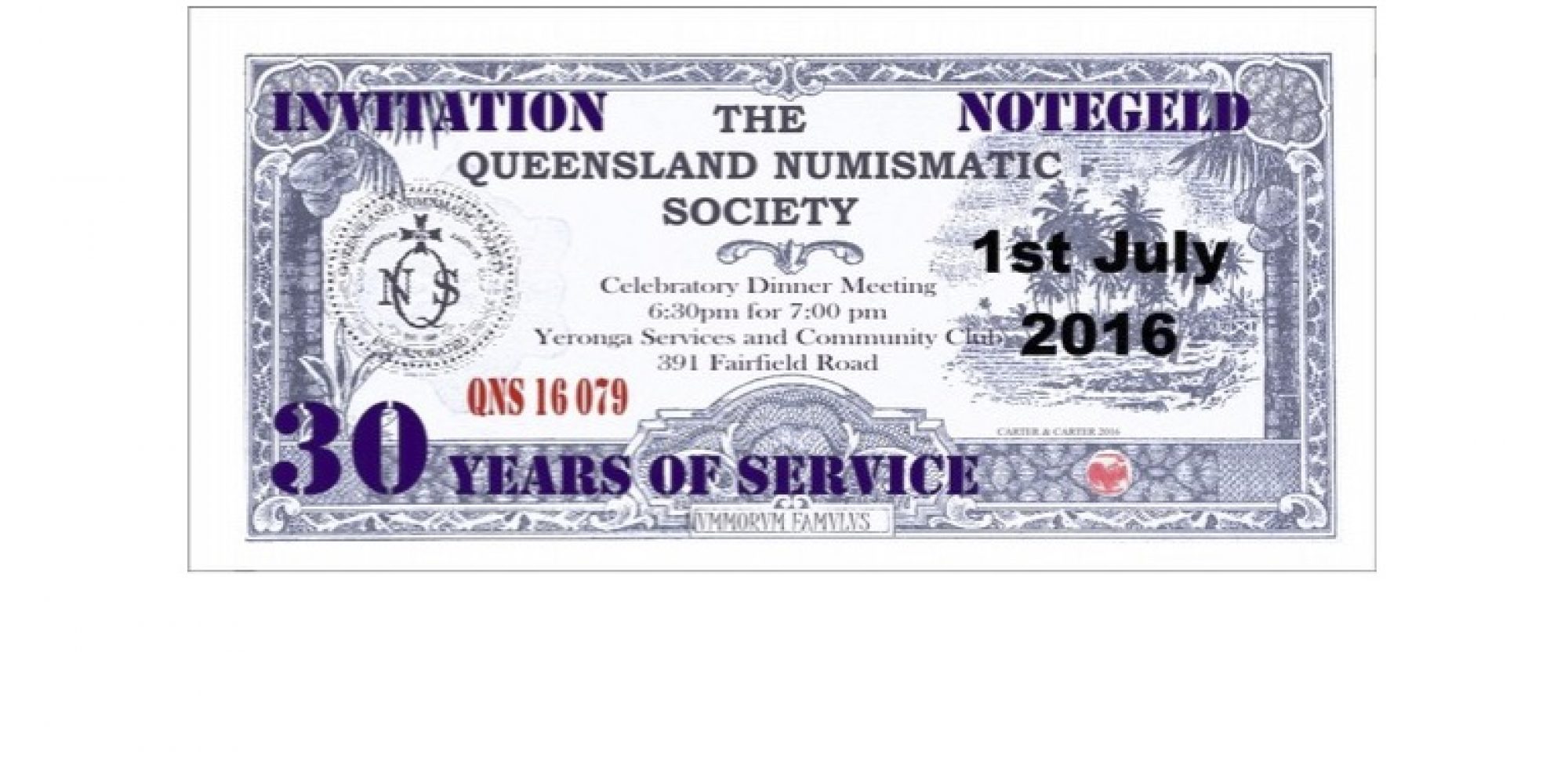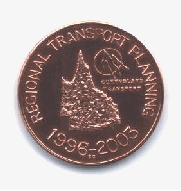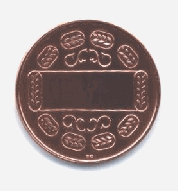Commemorating integrated transport planning in regional Queensland
from 1996 to 2003
by Mike Carter and Bruce Canning
 Transport planning in general is an area that no one notices, unless the planning does not occur. The importance of ensuring that transport planning occurs in a comprehensive and integrated manner was recognised in 1996 by the formation of a new division in Queensland Transport. Included in that new division were two branches called the Regional Transport Planning Branch and Transport Planning – southeast Queensland. A divisional review resulted in the merger of those two branches from 1 July 2003 to form the new Transport Planning Branch.
Transport planning in general is an area that no one notices, unless the planning does not occur. The importance of ensuring that transport planning occurs in a comprehensive and integrated manner was recognised in 1996 by the formation of a new division in Queensland Transport. Included in that new division were two branches called the Regional Transport Planning Branch and Transport Planning – southeast Queensland. A divisional review resulted in the merger of those two branches from 1 July 2003 to form the new Transport Planning Branch.
This article relates to the Regional Transport Planning (RTP) Branch. Since 1996 the branch has been very active in regional Queensland. As well as having a Regional Manager based in Cairns, Townsville, Rockhampton and Toowoomba, a team of land use and transport specials operated from Brisbane. Projects that the RTP Branch were heavily involved with included: The Gulf Savannah Integrated Regional Transport Plan; The Integrated Transport Study for Kuranda Range; The Southern Cairns Land Use and Transport Study; The Cairns Integrated Public Transport Study; The Townsville/ Thuringowa Integrated Transport Plan; The Townsville Port Access Impact Assessment Study; The Mackay Integrated Transport Plan; The Capricornia Integrated Transport Plan; The Gladstone Integrated Regional Transport Plan; The Eastern Downs integrated Transport Plan; the Wide Bay Integrated Transport Plan; the Border Integrated Transport Plan; Guidelines for Integrated Regional Transport Planning; and the Gowrie to Grandchester Railway Corridor Study. There are many other projects that the staff were involved with, and continue to be involved with, in the new branch.
To mark the end of the branch and to recognise the work and efforts of the staff that had made the branch what it was, it was decided to produce a memento. After much discussion it was agreed that a medallion would be suitable. Bruce Canning was approached to produce the medallion on the basis of his reputation for producing similar work.
Story continued by Bruce Canning
Mike sent me the proposed art work of the design he would like on the RTP medallion. On receiving it I contacted him to discuss the designs. We tossed a few ideas around and finally agreed on a form of the obverse design pictured. Now it was my task to transfer the design onto the die. This is where it became tricky, as you have to start thinking in reverse. Designing a medallion has to have balance and uniformity, also keeping in mind you are allowed a certain amount of poetic licence for artistic effect. With all this information in hand, I was ready to start work on the obverse die.
First step was to stamp the words and numbers REGIONAL TRANSPORT PLANNING 1997 – 2003 around the circumference of the die. One letter and number at a time, making sure I maintained the correct spacing between each. Next step was to scribe the profile of Queensland and once satisfied with its shape proceed to chisel the metal away within its borders to create a three dimensional effect. This is where poetic licence is useful. The Queensland government logo was next. I did this by hand filing four small firesticks out of special hardening steel, then carefully tapping each one into the die to leave their impression and then carving an oval around them which represents a shield. Underneath the logo I then stamped the word QUEENSLAND TRANSPORT.
At this point I was quite pleased with the way the die had progressed. All I had to do now was strike a trial medallion in lead to turn the reverse format on the die into its true form on the lead strike. Looking at the medallion I could see the state of Queensland looked very close to the shape I wanted. Logo was OK. The small QUEENSLAND TRANSPORT just needed to be stamped a little deeper. The word REGIONAL was correct. Next was TRANSPORT. I checked each letter as I had done with the others and to my horror I had created a new word: TRANSPORL.
Because this is a family magazine I cannot repeat my sentiments on this discovery. I shook my head in disbelief. I had spent 35 hours looking at this die, how could I have missed this? Perhaps, working in reverse does strange things to one’s brain. Maybe it was time to take up a new hobby. My only consolation was except for this ‘faux pas’ every thing on the die was well balanced and it was just a matter of stamping the letter T into the die, and then the long process of filing back the surface of the die, restamping, chiselling and so forth until the L disappeared. This didn’t take very long at all, only 16 hours. I rang Mike to give him the good news that the die was finished and during the course of the conversation, he said that he had been talking to one of his colleges about the project and was informed that the branch had its beginning in 1996, not 1997 as first thought.
I recall reading an article in a numismatic journal where dies were recut to create an overdate. An example is the Australian George V 1921/22 threepence. So I applied this idea to my die by stamping the 6 over the 7 and fortunately very little of the 7 is showing. The obverse die was finally finished and was now ready for hardening. The reverse die was fairly straight forward. My design as pictured is two large elongated circles with eight smaller ones around the circumference. The large elongated circles are joined by a line top and bottom to create a space for the engraving of the recipient’s name and years of service. Some scroll work above and below this space to fill in the void and finally stamping in the floral work on the inside of each elongated circle which helped get rid of the emptiness I felt the die still had. All up, the time spent on the reverse and obverse dies was about 60 hours and I must say one of my most challenging jobs.
Mike picks up the story…
Bruce delivered the goods. The medallion was, as promised, very impressive looking and just what I was hoping for. Bruce’s approach, patience and professionalism were appreciated and I would recommend him to anyone else considering such a project. The medallion is to be presented to members of the RTP Branch at a RIP RTP Dinner on the 30 July 2003.< As this article was written prior to the dinner I can not report on the reception of the medallion but I expect that it will be well received. Peter Jensen the longest serving member of the branch (1996 to 2003) has committed to do the actual presentation along with a suitable comment for each member of staff. With good food and company, I expect an enjoyable night commemorating the end of the RTP Branch and looking forward to our new branch.
Technical details
Diameter: 38 mm (same as 1937 Australian crown)
Issuing Criteria: Issued to members of the RTP branch who had served for more than one year, or who were present at the time of the end of the branch
Mintage: 30 in copper were issued for presentation to RTP staff. These will be engraved with name and period of service.
Obverse: Designed by Bruce Canning and Mike Carter
Reverse: Designed by Bruce Canning
Minted: Bruce Canning Mint, Gatton
This article first published in the August 2003 Magazine


